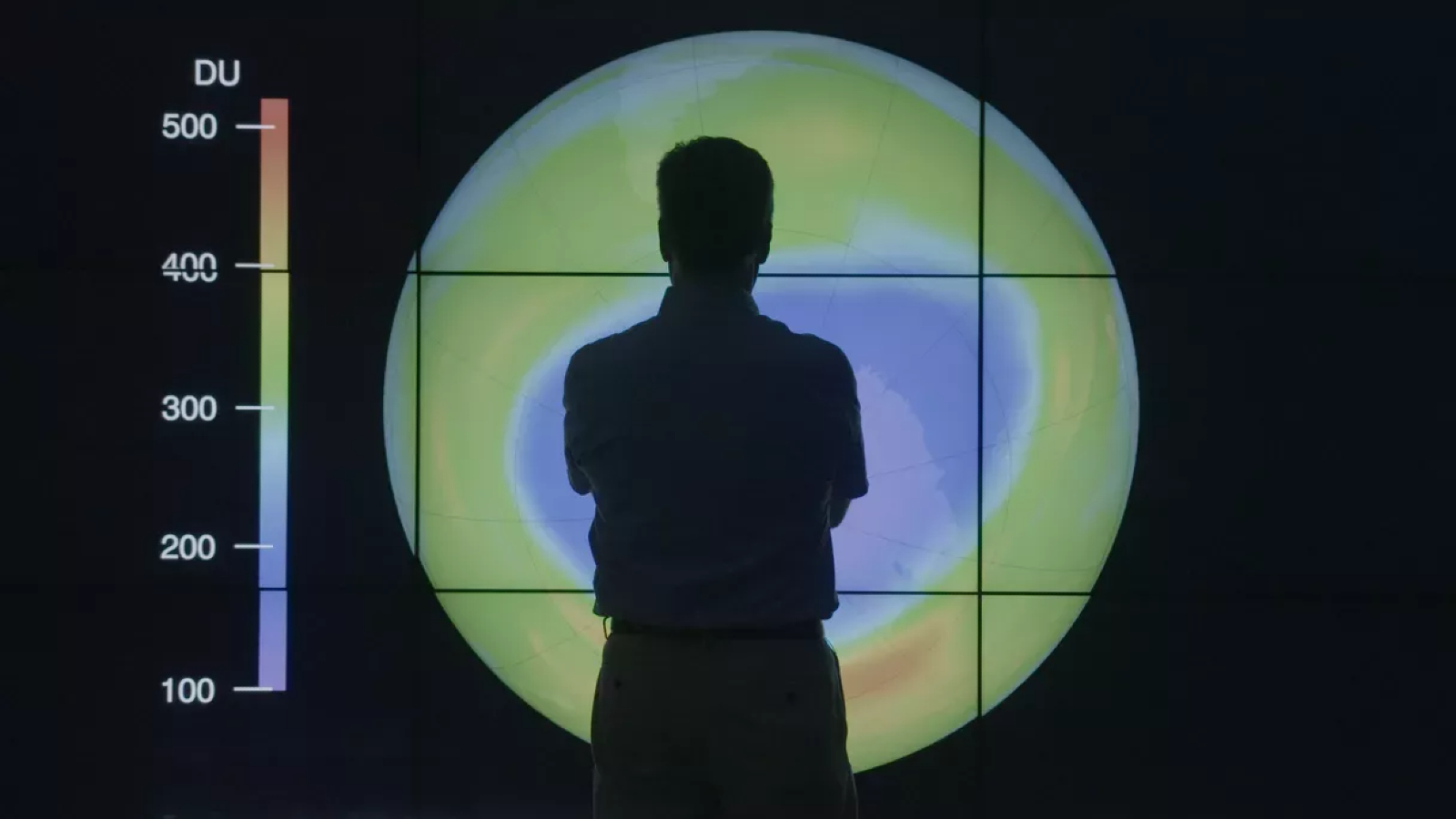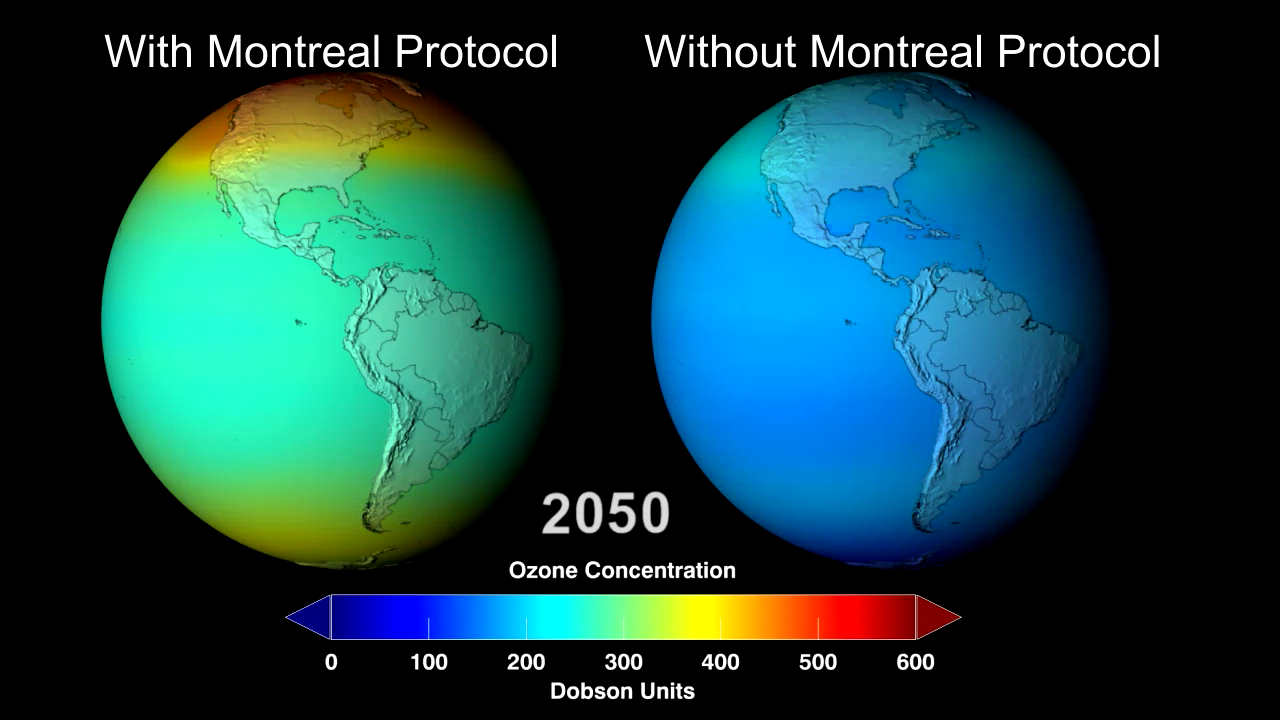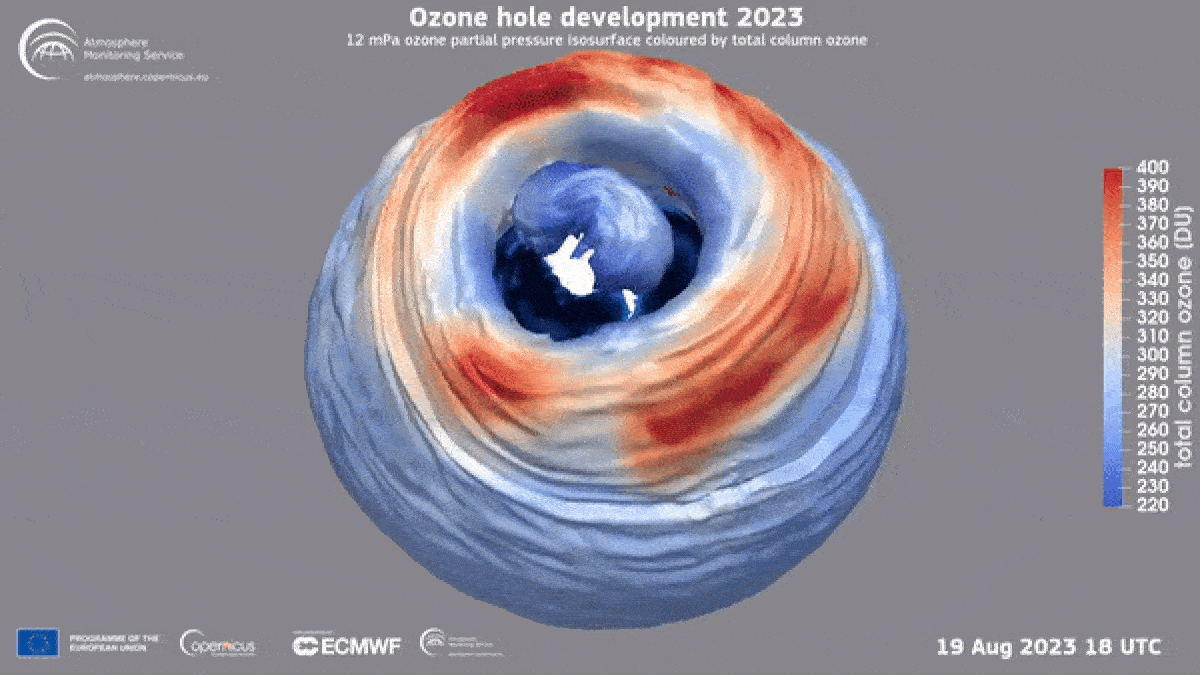
A controversial new study has sparked concerns that the ozone hole above Antarctica is not recovering as fast as we thought it was, and may even be getting bigger. However, many experts who were not involved in the study have rejected those claims, criticizing the quality of the research.
The ozone layer is a section of Earth's atmosphere between 9 and 22 miles (15 and 35 kilometers) above the surface, where there is a high concentration of ozone — an oxygen molecule variant with three atoms instead of the usual two. This layer blocks out harmful levels of ultraviolet rays from the sun that could otherwise cause serious damage to life, including humans.
In the mid-1980s, scientists began to notice that large holes in the ozone layer were appearing above the North and South poles as a result of chlorofluorocarbons (CFCs), which break down and react with ozone, thus splitting the molecules and decreasing ozone levels. In 1987, world governments united to sign the Montreal Protocol, which would ban the use of CFCs that had, until then, been used heavily in aerosol cans, packing materials and refrigerators.
The ozone holes have persisted, particularly above Antarctica, due to lingering CFC levels and increasingly erratic climate conditions. However, they are smaller than they used to be and scientists have long expected that the holes will eventually fully recover. In January, a United Nations report on ozone depletion revealed that ozone levels are on track to return to pre-1980 levels by 2045 in the Arctic and 2066 in Antarctica.
However, the controversial new study, published Nov. 21 in the journal Nature Communications, suggests that the concentration of ozone in Antarctica's ozone hole is decreasing. The new paper sparked a wave of stories from major news outlets claiming that the "ozone hole may not be recovering at all" and may even be growing. However, many experts have argued that the study's findings are dubious and that the resulting coverage is very misleading.
Related: Claims of new 'tropical ozone hole' raise controversy

The study analyzed the concentration of ozone at the center of Antarctica's ozone hole between 2001 and 2022 and found that the concentration of ozone at the heart of the hole had decreased by an average of 26% during this time.
However, other ozone experts are not at all convinced by the results or the methods used to get them.
Parts of the paper are "terribly unclear" and "wildly speculative," and despite the researchers' claims, the study "tells us nothing new," Susan Solomon, an atmospheric scientist at MIT who was part of the team that first linked ozone holes to CFCs in 1986, told Live Science.
The biggest problem with the new paper is that it does not properly account for why ozone concentrations have decreased in recent years, Solomon said.
Since 2020, the size of the ozone hole has increased year over year, with the largest gap occurring this year. These unusually large holes are the result of a number of known factors, including three successive years of La Niña from 2020 to 2022, which created colder air around Antarctica, making it harder for ozone to form; and the massive wildfires in Australia during 2020, which released particulates that depleted ozone. This year's extremely large hole has also been attributed to water vapor injected into the upper atmosphere from Tonga's underwater eruption in January 2022.

But the authors do not explain why the "past few years have been quite unusual," which makes it seem like there is some unknown factor that is limiting ozone recovery when, in reality, there is not, Solomon said. "This is a big, big deal" and is "very disappointing," she added.
The researchers also chose to omit data from 2002, when ozone levels were unusually high, and 2019, which had one of the smallest ozone holes on record. The researchers argue that these anomalies would unfairly skew the results, but other scientists have criticized this decision, especially considering that the recent anomalous years were still included.
"It is questionable how the authors can remove 2002 and 2019 from the record but not 2020-22, given that all of these years have been shown to be dominated by very special and rare events," Martin Jucker, an atmospheric scientist at the University of New South Wales in Australia, said in a Scimex statement. "Including those events would probably have nullified any long-term negative trend in ozone concentrations."

Both Solomon and Jucker also believe that the time period analyzed in the new study is too short, which has given too much weight to recent years and produced unrealistic results.
Related: Ozone-destroying CFCs could make late-21st-century comeback
In addition, the new study also focuses only on the ozone concentration at the heart of the ozone hole and not on wider ozone concentration levels, which do not tell the whole story, Solomon said. Without providing any models for how these central concentrations affect wider ozone concentrations, the study provides little information that other researchers can follow up on, she added.
The time of year the ozone hole data comes from is also problematic, Solomon said. The researchers focused on data from October and November, when ozone holes reach their maximum size, which is influenced by a range of factors. If the team wanted to study ozone recovery, then using data from September would have been a better point of comparison, Solomon said.
As a result of these oversights and omissions, the paper cannot be relied upon to infer much about global ozone recovery trends, Solomon said.







